Probing the Prophets
Rabbi Nachman Winkler
Faculty, OU Israel Center page 24
הננתא
א:גל תומש
Simchat Shmuel

Rabbi Sam Shor


Program Director, OU Israel Center
page 46


Probing the Prophets
Rabbi Nachman Winkler
Faculty, OU Israel Center page 24
הננתא
א:גל תומש
Simchat Shmuel

Rabbi Sam Shor


Program Director, OU Israel Center
page 46

04
Dear Torah Tidbits Family
Rabbi Avi Berman
08Determined Patience
Rabbi Moshe Hauer
10
16
20
Aliya By Aliya Sedra Summary
Rabbi Reuven Tradburks
Don’t Take Down the Sign!
Rabbi Dr. Tzvi Hersh Weinreb
The Closeness of God
Rabbi Lord Jonathan Sacks zt"l
24Probing The Prophets
Rabbi Nachman Winkler
26Parah Aduma and Korban Pesach
Rabbi Shalom Rosner
30Lofty Learning
Rebbetzin Shira Smiles
32OU Israel Schedule
42Parshas Parah: Lev Basar
Rabbi Judah Mischel
46Simchat Shmuel
Rabbi Sam Shor
48Stubborn In All the Right Ways
Rabbi Moshe Taragin
52Joy Only in the Land
Rabbi Aaron Goldscheider
56Learning During Kaddish
Rabbi Daniel Mann
58The Y- Files Weekly Comic Netanel Epstein
60Torah 4 Teens By Teens
Yaakov Gottlieb // Jonah Klein
Photo by: Julian Alper
My wife and I made Aliyah to Tverya in 2014, from Manchester UK. We feel blessed to live in the North of Israel surrounded by Hashem’s wonderful world of nature. This photo, of a plain tiger butterfly, was taken in the nearby Hula Valley. The life cycle of butterflies is an incredible adventure in metamorphosis. From eggs, caterpillars are hatched which subsequently sort of die, forming a chrysalis from which a beautiful butterfly develops. Likewise, we, who were born in Chutz L’Aretz went through various phases in our lives, and have only reached our full potential with our Aliyah to Israel, to the land Hashem promised to our forefathers.

Ranges 11 days Wed - Shabbat
March 8-18 / 15-25 Adar
TImes According to MyZmanim (20 min. before sundown in most cities, 40 min. in Yerushalyim and Petach Tikva, 30 min. in Tzfat/Haifa)
OU Kashrut NCSY Jewish Action JLIC NJCD / Yachad / Our Way OU West Coast OU Press Synagogue/Community Services OU Advocacy OU Israel
MITCHEL R. AEDER, PRESIDENT OF THE ORTHODOX UNION Yehuda Neuberger, Chairman of the Board, Orthodox Union | Dr. Josh Penn, OU Kashrus Commission

RABBI MOSHE HAUER, EXECUTIVE VICE PRESIDENT | RABBI JOSHUA M. JOSEPH, ED.D. EXECUTIVE VICE PRESIDENT & CHIEF OPERATING OFFICER
Rabbi Dr. Tzvi Hersh Weinreb, Exec. V.P. Emeritus
OU KOSHER: Rabbi Menachem Genack, CEO/Rabbinic Administrator OU Kosher | Rabbi Moshe Elefant, COO/Executive Rabbinic Coordinator ISRAEL: Rabbi Yissachar Dov Krakowski, Rabbinic Administrator | Rabbi Ezra Friedman, The Gustave & Carol Jacobs Center for Kashrut Education/Rabbinic Field Representative
Headquarters: 40 Rector St. 4th floor, New York, NY 10006 212-563-4000 website: www.ou.org
Editor Emeritus: Phil Chernofsky
Editor: Rabbi Aaron Goldscheider | aarong@ouisrael.org
Advertising: Ita Rochel | 02-5609125 or ttads@ouisrael.org
Website: www.torahtidbits.com
Not getting enough TTs? Too many? None at all?
Contact our DISTRIBUTION 050-577-2111 • ttdist@ouisrael.org
Earliest Tallit and Tefillin
- 4:55 Sunrise 5:58 - 5:46
Sof Zman Kriat Shema 8:54 - 8:46
Magen Avraham 8:18 - 8:10
Sof Zman Tefila
(According to the Gra and Baal HaTanya)
9:53 - 9:47
Chatzot (Halachic Noon) 11:50 - 11:47
Mincha Gedola (Earliest Mincha) 12:20 - 12:17
Plag Mincha
4:28 - 4:33
Sunset (Including Elevation) 5:46 - 5:53
Seymour J. Abrams • Orthodox Union Jerusalem World Center • Avrom Silver Jerusalem College for Adults • Wolinetz Family Shul • Makom BaLev • Birthright • Yachad • NCSY in Israel • JLIC in Israel • Pearl & Harold M. Jacobs ZULA Outreach Center • The Jack Gindi Oraita Program • OU Israel Kashrut
STUART HERSHKOWITZ, PRESIDENT OU ISRAEL
Zvi Sand / Yitzchak Fund: Former Presidents, OU Israel

| Rabbi Emanuel Quint z”l, Senior Vice President | Prof. Meni Koslowsky, Vice President
VAAD MEMBERS:
Dr. Michael Elman | Moshe Kempinski | Sandy Kestenbaum | Norman Schmutter | Esther Williams | Harvey Wolinetz
RABBI AVI BERMAN, EXECUTIVE DIRECTOR, OU ISRAEL
David Katz, CFO, OU Israel | Chaim Pelzner, Director of Programs, OU Israel | Rabbi Sam Shor, Director of Programs, OU Israel Center Rabbi Sholom Gold, Dean, Avrom Silver Jerusalem College for Adults
22 Keren HaYesod <> POB 1441 <> Jerusalem
9101032
phone: (02) 560 9100 | fax: (02) 561-7432
email: office@ouisrael.org
website: www.ouisrael.org
Founders and initial benefactors of the OU Israel Center: George and Ilse Falk a"h
Torah Tidbits and many of the projects of OU Israel are assisted by grants from THE JERUSALEM MUNICIPALITY
OU Israel, Torah Tidbits does not endorse the political or halachic positions of its editor, columnists or advertisers, nor guarantee the quality of advertised services or products. Nor do we endorse the kashrut of hotels, restaurants, caterers or food products that are advertised in TT (except, of course, those under OU-Israel hashgacha). Any "promises" made in ads are the sole responsibility of the advertisers and not that of OU Israel, the OU Israel Center , Torah Tidbits.
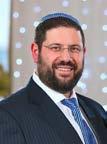
Every Shabbat, my wife and I experience Nachat when our two youngest children
– Mordechai who is ten years old and Moriah who is seven – join us at the 6:50 am minyan at our shul. Moriah sits with Pnina and Mordechai sits with me. He has a beautiful habit of going and standing by the Bima during Torah reading. Since he is fluent in Hebrew, he understands the words and usually follows along.
The book of Beresheit and the beginning of the book of Shemot are interesting to listen to. The stories of the Avot and Imahot (forefathers and foremothers), followed by the stories in Egypt and the miracles of the ten plagues and the splitting of the sea are easy for him to understand.
After listening to the parsha, Mordechai goes out for a break during the Haftorah and then returns to daven Musaf. This past week, I looked up during shlishi and noticed that he had already left. The nuances and repetition in the parshiyot about the building of the Mishkan (tabernacle) and its vessels are hard for adults to follow, all the
more so kids.
As adults, most of us stay in Shul and listen to the Torah reading even when we don’t fully understand it or have a harder time relating to the concepts. We know that even Moshe Rabeinu had to be shown an image to fully understand. Similarly, when learning different areas of Halacha there are concepts that are hard to grasp.
How do we create a situation in which the next generation is connected to what they are learning?
One answer is to come up with modern day scenarios comparable to the cases in the sources. For example, children can’t relate to an ox doing damage, but if we modernize it as a Tesla crashing into a Chevy the Halachic scenario becomes more relatable. Another answer is for them to experience what they are learning about, whether via pictures, videos, acting out scenarios or building models with their own hands.
There are resources available to help the younger generation better understand the parshiyot of the Mishkan. (Perhaps we as adults should utilize them as well… especially if we use this as a bonding opportunity with the children in our lives.)
Artscroll’s The Mishkan, Its Structure and Its Sacred Vessels is a book which brings

the verses to life through beautiful color pictures and explanations. A visit to the ancient Shilo or to Machon HaMikdash is a powerful way for everyone to learn about the sacred vessels in the Mishkan and Beit HaMikdash. Another amazing tool is a build your own model of the Mishkan kit by Neshuma, an Israeli company which creates educational art kits to help make different aspects of Judaism more relatable.
I recall building a model of the Beit HaMikdash as a child for Tisha B’Av and then watching it burn. The image is clear in my mind decades later. Building the model was an excellent tool for learning and understanding. Therefore, I was excited to see that children can use Neshuma’s kit to learn about and appreciate the Mishkan. (For more information and purchase kits visit: facebook.com/

אבא םהרבא ל’’ז המלש ןב

רדא 11
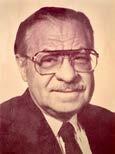




In loving memory of and תמשנ יוליעל
Dr. Abraham Abba Walker z"l
On his 39th Yahrzeit -
May the midot he taught live on in all those whose lives he touched.
Daddy, you are always in my heart.
Tami (Shulamit Chana)Walker, Eitan Abba (grandson) and Eitan’s aishet chayil - Sarah Yehudit
neshumekits or myneshume@gmail.com)

Experiential education is a focus of our work at OU Israel. Studies have shown that summer camps are incredibly effective for educating youth and ingraining values into their day to day lives. Camp Dror staff work year-round on creating a value based, fun, engaging curriculum and schedule for camp.
OU Israel Youth Centers and NCSY Israel place a strong focus on experiential learning as well, engaging teens in ways that they can relate to and internalize. NCSY’s Winter Regional Shabbaton which took place in Moshav Nechalim is a prime example. We had a record 215 people who came to socialize and be inspired

while strengthening their connection to living in Israel. The entire NCSY Israel staff, led by co-directors Rabbi Yosef Ginsberg and Rabbi Michael Kahn did an incredible job. Kudos to Educational Director Shlomo Rayman who developed the theme and materials for the Shabbaton which focused on the teens’ unique talents and abilities and how we can contribute to Am Yisrael. Sessions included a “choose your own adventure” where teens could pick small group discussions on “Faith and God” or “Life as an Anglo teen in Israel” or join a Q&A with select staff.
I encourage all of us to take advantage of the tools, resources and programs available to help connect the next generation to the values and Halachot of our beautiful religion – they are our future!
Wishing you all an uplifting and inspiring Shabbat,
Rabbi Avi Berman Executive Director, OU Israel aberman@ouisrael.orgMarch 15
March 24
March 19
March 28

at Beit Tovei Hai'r
Beit Tovei Ha’ir invites you and your friends (70+ and independent) to a sumptuous brunch with Kalman Samuels, the founder of Shalva. Mingle with friends at Jerusalem’s premier residence for religious seniors, and tour our new apartments and fitness center.

Monday, March 13, 2022 | רדא 'כ from 9:45 am | 36 Rehov Malchei Yisrael, Jerusalem


Free event for relevant participants.
To reserve your place, contact Binyamin Margo at 054-446-5276
Anticipation, waiting, looking forward. It is a difficult task to do these patiently, remaining focused on the goal and willing to wait for it, however long it takes. Yet it is that kind of dreaming and discipline that keeps us aiming high and avoiding settling for mediocrity.
This tension was at the core of the story of the Golden Calf, the Eigel Hazahav, in which the Jewish people ran out of patience, lowering their standards and expectations from living under the leadership of the saintly Moshe to following the image of an animal. What a shocking change! Yet, they made that adjustment because – after all – Moshe had been gone for forty days and they could now conceive of life without him.
This same issue may be the intent of the familiar verses about Shabbos that are found immediately before the story of the

 OU Executive Vice President
OU Executive Vice President
Golden Calf (Shemos 31:16). “V’shomru b’nei Yisrael es Hashabbos. The Jewish people shall guard the Shabbos so as to make the Shabbos an eternal covenant for their generations.” The Ohr HaChaim suggests that the mandate to “guard the Shabbos,” or, “v’shomru,” relates to the use of that same term describing Yaakov’s attitude towards Yosef’s dreams, where it is written (Bereishis 37:11) that “his father guarded the matter, v’aviv shamar es hadavar. There we are taught by Rashi that the term implies a carefully guarded hope, where Yaakov was waiting and anticipating the fulfillment of Yosef’s dream.
It was this anticipation that prevented Yaakov from becoming reconciled with the loss of Yosef as he maintained the hope and dream of being reunited with and seeing the future leadership of Yosef (37:35; see Rashi there). He could easily have become resigned to the apparent reality of Yosef’s death, but he chose to dream on, and the dream was ultimately fulfilled.
That is how we “make the Shabbos.” We
wait for it, holding on with anticipation for the special quality of that day, not allowing ourselves to settle into the mundane world of our weekdays. The more we “wait for Shabbos,” the more we long for something deeper and calmer, something more connected and sacred than our regular days, the more we will experience Shabbos in that way.
This same attitude stands as the basis for the core value of העושיל הייפצ, the yearning for redemption that is expected of all of us. The world is not quite right, there is much that is still broken. The more we get comfortable with it as it is, the less likely we are to be able to see it arrive at its ultimate perfection. Ours is the task of patience, waiting with determination to see our personal and collective dreams fulfilled, and never settling for anything less.
but you could possibly do them. For when it comes to communications from G-d, you are unique, irreplaceable, sui generis, one of a kind.
This exchange presents a fundamental principle of the Torah: that G-d speaks to Moshe in a way that He does not, nor will He in the future ever do again with anyone else. When Moshe says that people come to him seeking G-d, what he means is: I have access to G-d. He speaks to me. (Speaking to G-d isn’t the trick; the trick is when He answers back.) Similarly, when Moshe says that he teaches G-d’s law, what he means is that G-d communicates those laws to him and to no one else.
This could very well be the prime purpose of this Yitro story. For, in the very next story, the giving of the Torah, the very same theme of Moshe’s uniqueness as the one to whom G-d speaks is central.
3rd aliya (18:24-27) Moshe heard. He chose judges, with only the most difficult cases brought to him. Moshe sent Yitro home.

It takes an honest leader to accept suggestions to improve. Moshe displays his honesty and humility – if the suggestion is good, embrace it. Just as Yitro accepted the news of the Exodus and affirmed One G-d,

kerenmalki.org

02-567-0602


Keren Malki empowers families of children with special needs in Israel to choose home care. Donations are tax-approved in Israel, US and UK.

Honoring the memory of Malka Chana Roth ד”יה 1985-2001, killed in the Sbarro bombing.

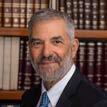
The first third of the Parsha concludes instructions concerning the Mishkan. The rest of the Parsha is the story of the Golden Calf, concluding with reconciliation and forgiveness.
The first aliyot are among the longest in the Torah; the first is 44 verses, the second 47. The remaining are among the shortest; 5 aliyot, 48 verses.
1st aliya (30:11-31:17) All are to give a half shekel to be an atonement. The offerings are brought from these funds – and hence, all the people are represented equally as a remembrance and atonement. Make a wash basin of copper. Place it outside the Mishkan area, near the altar. The Kohanim must wash their hands and feet before service. Make spiced anointing oil to anoint the Mishkan, all its utensils and the Kohanim. This recipe is not to be made for personal body lotions. Make incense to place in front of the ark, the place that I will meet you. This incense is holy of holies. It is not to be made for your olfactory pleasure. I have called Bezalel and filled him with the Divine spirit to master all means of craftsmanship, in metals and in
materials. He, with Ohaliav, will fashion all the things that I have commanded be made for the Mishkan. Keep Shabbat as a sign between Me and you for all time, for I am the One who sanctifies you. Do not do any melacha. It is an eternal sign for them that in six days I made the world and in the seventh ceased.
This very long aliya allows the entire story of the Golden Calf to be told in the Levi aliya, the second, as the Leviim did not participate in the Golden Calf.
The instructions for the building of the Mishkan have been completed. As have the instructions for the Kohen’s garments. The instructions here are all preparations; you won’t be able to start the actual use of the Mishkan without these things. Money. Anointing oil to sanctify all the vessels. Wash basin. Incense. Have all these things ready for when the Mishkan is built.
The Kohanim were required to wash before the service. Hands and feet. Rashi says: put your right hand and right foot together and pour the water over both at once. Water is a recurring theme in the Torah. Hearkening back to creation. Verse 2 of the Torah: And the spirit of G-d hovered over the waters. Water is a symbol of going back to Creation; a restart, reboot, recreation, fresh start.
But sometimes we immerse in the water; here, we don’t go into the water, we pour the water on ourselves. Going into the water is submission; I let go of my autonomy and submerge myself into the water. Here, the Kohen is in charge. He pours the water. Pouring is assertive; immersing is submissive. Holiness is created not only by submission but also by man’s assertiveness.
and our next step will be to plant a fruit tree. I never thought of myself as being the agricultural type, but the feeling of settling and planting a portion of Eretz Yisrael, has been truly euphoric. Iy”H, when we plant our tree, and eat the fruits that will grow one day, I think we will be able to truly appreciate that unique Kedusha found in the fruit of Eretz Yisrael!

Man is G-d’s partner in creating holiness. The vessels of the Mishkan, including the Menorah and Shulchan only become holy through being anointed. Holiness requires man’s hand. That is remarkable. Man is the partner of G-d in creating holiness.
Until we get to Shabbat. Holiness of Shabbat does not require man’s action; it requires man’s inaction. The Mishkan is tactile holiness, holiness of matter. Earthly holiness. Earthly holiness is created by man. Shabbat is the holiness of being, non-tactile. The holiness of time of Shabbat requires inaction, withdrawal. Being. Without creating. Holiness is a duality; of action and inaction, creation and withdrawal, partnering with G-d in its formation while deferring to the Holy One on Shabbat.
To conclude, when you buy your Tu B'shvat fruit this year, don’t search for those dried apricots and banana chips imported from Turkey. Rather, head over to the fresh produce and buy yourself some nice juicy Kedusha-filled Jaffa oranges and thank Hashem for bringing you to this land in order to be able to הבוטמ עבשלו הירפמ לוכאל, imbibing that Kedusha in every bite that you take!!
2nd aliya (31:18-33:11) Moshe is on the mountain receiving the luchot; the people below are making a golden calf. G-d tells Moshe: your people have made a golden calf. I will destroy them and begin anew with you, Moshe. Moshe pleads on their behalf. G-d relents. Moshe descends with Divinely inscribed tablets. He sees the golden calf, smashes the tablets. Moshe confronts Aharon. Aharon explains what happened. At the behest of Moshe, the Leviim punish the 3,000 guilty. Moshe ascends the mountain. He admits the sin of the people, asking for forgiveness. And if not, remove me from the book. G-d counters: those that sin will be the ones to be erased. Now, go, led by My angel and lead the people to the land. For I will not be in your midst lest you be destroyed. The people are distraught. Moshe moves the tent of meeting outside of the camp, for there G-d will now speak with


him. A cloud descended; G-d spoke with Moshe. The people saw and bowed. G-d spoke to Moshe face to face, as people do.
The dominant theme of this very rich and complex story is the theme of forgiveness. The Torah has been the story of G-d’s reach for man. It culminated in the intimate revelation at Sinai. The Mishkan is to be an enduring point of contact between man and G-d. After all that reach of G-d for man, comes this sin of infidelity. But the story is not the story of sin, but the story of G-d’s reach for man in spite of man’s sin.
Very little is said about the sin; but many many verses describe the forgiveness. While the story involves sin, its message is of forgiveness. It is the story of the love that endures after the sin. The people are not destroyed. The march to the Land of Israel continues. G-d continues to speak to
Moshe. Sin, idol worship no less, will happen; but He does not give up on man.
3rd aliya (33:12-16) Moshe challenges G-d: If I have found favor in your eyes, tell me Your ways. That way I can act properly, for this is, after all, Your people. G-d: I will guide you. Moshe: Don’t move us from here unless Your Face goes with us.
This is the fullest, richest interaction between G-d and Moshe that we are privy to overhear. Moshe wants to know G-d’s ways. He wants intimacy. Not distance. And he’s not alone in that one; this is now man seeking G-d. How are we going to work out this Divine-human interaction? Because You are here and You are not. Moshe seeks closeness. G-d demurs. Moshe presses. We want your Face.
077-2050015
052-2678749
golanechasim@gmail.com

Baka: 4 room apartment, 82m, storage, elevator, balcony, 2,950,000 NIS
Rasco: new 4 room apartment, 105m, elevator, balcony, very nice view 3,100,000 NIS
Katamon: new project, 2-3 room apartments, starting from 1,750,000 NIS

4-5 room apartments starting from 3,200,000 NIS
All apartments are fully accessible with parking and storage.
Rechavia: 4-room apartment, 92m, Suka balcony, Shabbat elevator, fully accessible, private parking, storage 4,400,000 NIS
Baka: 5-room garden apartment, 140m, master suite private parking, storage, full of light, airy, nice garden, 5,250,000 NIS
Old Katamon: Spacious new 5-room penthouse, 155m, terrace, great panoramic view, underfloor heating, full of light, Shabbat elevator, 2 parking spots, rental unit, 8,900,000 NIS
The Greek Colony: charming 3-room apartment on "Dmei Mafteach" (tenancy protected for life) full of light & good energy, 74m, high ceilings, balcony, 1,350,000 NIS
4th aliya (33:17-23) G-d: I will do as you say. Moshe: show me Your kavod, Your glory. G-d: I will pass before you, will call My name before you, show mercy to whom I choose to show mercy to. You cannot see My face and survive. Stand in the nook in the rock; I will pass in front of you. You will see My back but My face you will not see.
G-d acquiesces to Moshe’s demand for closeness. To a point. Moshe presses on. Not just Your Face. Who are You? I want Your fullness, Your glory. G-d does not back off. I will reveal but with limits: glimpses from behind need suffice. This exchange is what we all sense in the challenge of this
A small Sefer Torah with its own Aron Kodesh is available to shiva houses or for any other necessary occasion on a temporary free-loan basis. If needed call Uri Hirsch 0545513173
be in loving memory and נ"על our dear parents whose yahrtzeits are in Kislev
been memorialized in a popular song, "An eternal people does not fear the long and arduous path."
052-385-9944 • 054-499-9043
Doris Weinberger a"h
ולסכ 'ד -ה"ע המלש לאקזחי תב האל הרובד
world. We see but we don’t. We perceive, but from behind. We want a peak but must live without.

Max Weinberger z”l
ולסכ ז"כ -ל"ז בד ןב ךלמילא
Greatly missed by their children, grandchildren and great grandchildren
Rav Aryeh and Dvora Weinberger
Bernie and Leah Weinberger
Patience is necessary for those who follow Isaac's way. But a wise woman taught us that patience is but another name for hope. That woman was Jane Austen, who put these words into the mouth of one of the characters in her great novel, Sense and Sensibility: "Know your own happiness. You want nothing but patience—or give it a more fascinating name: call it hope."
5th aliya (34:1-9) G-d instructs Moshe to make a second set of tablets. Moshe ascends the mountain by himself. G-d descends in a cloud and he calls: G-d, G-d, Merciful… the 13 attributes of mercy. Moshe bows. And says: please be in our midst, for though the people are obstinate, forgive their sins.
Menachem and Hannah Katten


In observance of the Shloshim of our friend
Yehuda Leib Berren z"l
Rav Menachem Weinberg will give a shiur in his memory "Heroic Joy"
Monday evening, 23 November/ 8 Kislev

7:30pm
Zoom Meeting: 853 8980 1519
Password: Yehuda
When G-d descends and he calls out “G-d is Merciful” – who is the He? Is G-d describing Himself as Merciful or is Moshe calling out “oh Merciful One”? Is it G-d calling or Moshe calling? Does Moshe plead with G-d for mercy? Or does G-d Himself call out His own Name? The Talmud says that G-d is the One speaking. He teaches Moshe the 13 attributes of mercy. While that sounds odd – He is calling His own Name – in the previous aliya, He told Moshe he was going to do that. Verse 33:19: I will pass in front of you and I will call in the Name of G-d before you. G-d teaches man how to gain back His favor after sinning. That too is a sign of love of Him for us.
6th aliya (34:10-26)
G-d responded: I am making a cove nant. You will see signs and wonders, G-d’s work that is awe some. You keep what I command. Don’t make a pact with the people in the Land, for it will lead to you worshipping idols, and to marriage with them. Keep our festivals, our Shabbat, our laws in our Temple.
The march to the Land of Israel continues. As if to say: now, let’s get back to where we were. We were marching to the Land. That sin? That was a really bad sin, a disappointing national sin that golden calf. But let’s get on with things; marching to the Land. Now that is true forgiveness.
7th aliya (34:27-35) Moshe was on the mountain for 40 days, writing the second set of the 10
21st of 54 sedras; 9th of 11 in Sh’mot
Written on 245.17 lines in a Torah (8th)
14 Parshiot; 10 open, 4 closed
139 p’sukim (10th), 1st in Sh’mot
2002 words (5th), 1st in Shmot
7424 letters (8th), 1st in Sh’mot
Large sedra in general plus relatively long p’sukim, which explains the jump in rank from 10th for p’sukim to 5th for words. Only 4 other sedra have more than 2000 words.
9 mitzvot; 4 positives, 5 prohibitions
9 doesn’t seem like very many mitzvot, but only 17 of the other 53 sedras (less than a third) have more mitzvot
commandments. As he descended with the tablets, his face shone. The people were afraid of him. Moshe instructed them in all that G-d spoke with him on the mountain. Moshe covered his face when he was with the people, uncovering it when G-d spoke with him.
This most intense of parshas ends with an even more sublime image. Moshe’s encounter with G-d is written all over his face. Proximity to the Divine cannot leave one unchanged.
MAFTIR ALIYAH
PARSHAT PARAH
BAMIDBAR 19:1-22
HAFTORAH
YECHEZKEL 36:16-36
This week’s special haftorah mentions the “purifying waters” that G -d will sprinkle upon us with the coming of Moshiach. This follows the theme of this week’s additional Torah reading — the purifying qualities of the “Parah Adumah”
The prophet Yechezkel transmits Hashem’s
BY RABBI CHANOCH YERES R av, Beit Knesset Beit Yisrael, Yemin MosheIn a theological discussion, Moshe asks to see G-d’s glory. G-d answers Moshe: (גכ:גל) וארי אל ינפו ירוחא תא תיארו יפכ תא יתרסהו
“And I will take away My hand, and you shall see My back, but My face shall not be seen.” (33:23)
What is G-d offering to Moshe to see of Him?
Rashi quotes the Talmud Berachot 7 that G-d showed His back, the knot of His Tefillin, to Moshe, seemingly in literal fashion.
The Chatam Sofer (Rabbi Moshe Sofer 1762-1839) points out that the ways of G-d in His arranging of daily events are difficult for us to understand. Only in hindsight, after an entire series of events have completed its course, can we identify the direction which was established initially. Even occurrences which are distressing at the time, can reveal the fingerprints of G-d in retrospection.
The pasuk can be interpreted in terms of this understanding:
“You shall see My back (in hindsight) but not My face (not as history occurs)” -And you will see My ways in the end. At the end of Days all men will be able to understand the ultimate intentions of G-d.
Shabbat Shalom
message: The Israelites have defiled the Holy Land with their idol-worship and immoral ways. As a result, they will be sent into exile. “And they came to the nations where they came, and they profaned My Holy Name, inasmuch as it was said of them, ‘These are the people of G-d, and they have come out of His Land.’” So G-d will take them out of their exile — but not by virtue of the Israelites’ merits: “Not for your sake do I do this, O house of Israel, but for My Holy Name, which you have profaned among the nations.”

Hashem will bring the Israelites back to the Holy Land and purify them with the waters of the Para Adumah. The people will feel ashamed of their actions, and after they will have undergone the process of purification and repentance, G‑d will rebuild the country and bestow upon it prosperity and bounty.
SHAAREI CHESSED / RECHAVIA
1) Renovated 110 sqm 3 bdrms, 1st floor, succah.
2) Beautiful 3 bdrm apt + 50 sqm succah balcony, shabbat elevator, parking and view.
3) New 228 sqm duplex penthouse, 30 sqm succah balcony, shabbat elevator, parking and a view.
GERMAN COLONY
2 bdrms, 2 bathrooms, succah+ roof terrace. OLD KATAMON
125 sqm, priv. entrance 3 exp. NIS 4,300,000
TALPIOT


4 rms, balcony, elevator, machsan, parking, view.
NACHLAOT
Renovated 2 rms, private entrance, storage room, NIS 2,350,000
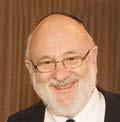
Times were very different then. When one of our books was torn, we didn’t junk it. We took it to a little shop where a bookbinder rebounded it.
When our briefcase (we didn’t have backpacks then) was falling apart, we didn’t discard it. Instead, we took it to that same shop where the proprietor stitched it and fixed it.
The proprietor of the shop that my friends and I frequented, down on the Lower East side of Manhattan, was an old man named Yossel.
Looking back, I now realize that Yossel, who was arthritic physically and far from genial emotionally, was a Holocaust survivor who eked out a meager livelihood by binding books, fixing broken zippers, and repairing all sorts of everyday tools and trinkets.
I remember once bringing some books to Yossel for rebinding and finding that the shop was closed. There was no sign on the door indicating that he was out to lunch, or that he had gone to pray, or when he would return.
So I came back to Yossel’s shop several times that week, and then but occasionally for the next two or three months. His sign, advertising his services, was still suspended over his doorway. I had every reason to assume that he would eventually reopen.
Finally, one day I approached his shop, and saw that the sign over his door was taken down. Now I knew that Yossel was out of business.
This experience, hardly significant in its own right, took on a very profound meaning for me when I first heard an explanation, given by the great sage known as the Chofetz Chaim, of why the Torah calls the Sabbath a sign in this week’s portion, Ki Tisa.

“The people of Israel shall keep the Sabbath... It shall be a sign for all time between Me and the people of Israel...” (Exodus 31:16-17)
The Chofetz Chaim explained that the Sabbath is like a sign on a shopkeeper’s door. However far a Jew might stray, he is still connected to the Jewish people as long as he keeps the Sabbath in some manner. As long as there is a sign on the shopkeeper’s door, he may one day return and reopen for business. But once the sign is removed, once Sabbath observance is
totally abandoned, then even that tenuous connection is severed.
It occurs to me that just as there are all sorts of signs, and Yossel’s makeshift shabby sign was certainly very different from signs on more luxurious stores, so too do Jews differ in the way in which they observe the Sabbath.
There are those who focus on every halachah involved in Sabbath observance. They are punctilious in following every rule contained in our code of laws.
There are others whose observance is a more spiritual one. They may keep the basic Sabbath laws in some fashion but find the joy of the Sabbath more personally rewarding. They enjoy the festive meals, and they heartily sing the Sabbath songs.
Still, others take delight in intellectual indulgences in celebration of the Sabbath. They study, they read, they converse, they teach.
Then there are those of a more mystical bent who use the Sabbath for introspection, meditation, and contemplation, and maybe even as an occasion to delve into the classics of Jewish mysticism.
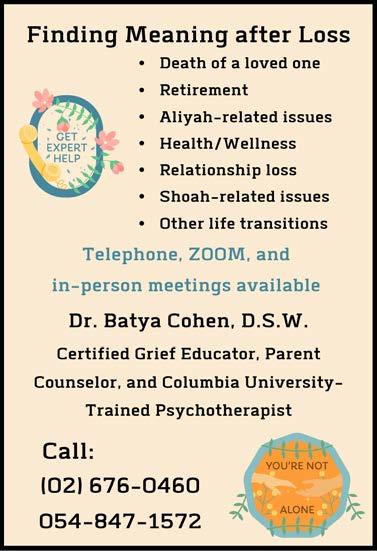
For some the Sabbath is something entirely different. It is merely a day of rest, a physical respite from the toil and stress
On HaPalmach - great 4 room apartment, 92m plus large garden in use, exclusive.

Asking 4.95 million NIS
Palmach - 4 rooms, beautiful, 105m, porch, 2 parking spots, machsan, asking 6.1million NIS
Smadar 050-3114040 // 02-642-4329
smadi_bida@walla.co.il

of a busy week.
Whatever your Sabbath is like, dear reader, as long as it is a special day for you in some way, the sign of Sabbath is suspended over your door. You are, at least potentially, a Sabbath observer, and that is a sign of your connection to God and to the Jewish people.
But there is a lesson here for all of us: None of us can say that our Sabbath observance is a perfect one. None of us is innocent of some minor halachic infraction. Certainly, none of us can say that our Sabbath is one of pure and untainted spirituality. We all have “a way to go”.
Yet the vast majority of Jews whom I know, of whatever level of observance or denominational persuasion, have the sign of Sabbath on their shop door, in some manner or another.
As long as that sign hangs suspended over our doorway, we can confidently look forward to that day when each of us will celebrate a Sabbath worthy of the ultimate redemption of which our sages assure us. For they have said the geulah, the final redemption of our people, will come about when we fully observe two Sabbaths in succession.
Don’t take down the sign!
Walking down King George St. in Jerusalem and want a cold bottle of water?
Come help yourself to a bottle at 52 King George.
In loving memory of Yoni’s wife Tziporah a"h, a true Eishes Chayil, always full of chessed, kindness and laughter, and brought life and strength to so many people, that she touched! She was like Aron, who loved peace and pursued peace.

Yoni thanks Hashem for having the opportunity of having Tziporah in his life, to learn of her caring, patience and happiness, to overcome her challenges. May Tziporah's Neshama be a light onto the world, in a time of darkness, and may her Neshama shine to Gan Eden. Yoni misses Tziporah with tears in his eyes, as Hashem gave him a gift, a crown jewel, now he returns her to Hashem. With thanks and Toda. Love, Yoni
To help refill the supplysend tax deductible donations for Be’er Tziporah a"h Bottled Water Gemach to Chabad of RechaviaRabbi Yisroel Goldberg email
Rabbi@JerusalemChabad.org 02 800-1717
www.JerusalermChabad.org/DonateShekels





The more I study the Torah, the more conscious I become of the immense mystery of Exodus 33. This is the chapter set in the middle of the Golden Calf narrative (between Exodus chapter 32 describing the sin and its consequences, and Exodus chapter 34 with God’s revelation to Moses of the Thirteen Attributes of Mercy, the second set of Tablets, and the renewal of the covenant. It is, I believe, this mystery that frames the shape of Jewish spirituality.
What makes chapter 33 perplexing is, first, that it is not clear what it is about. What was Moses doing? In the previous chapter he had already prayed twice for the people to be forgiven. In chapter 34 he prays for forgiveness again. What then was he trying to achieve in chapter 33?
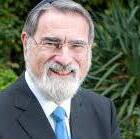
Second, Moses’ requests are strange. He says, “Show me now Your ways” (Ex. 33:13) and “Show me now Your glory” (Ex. 33:18).
These seem more requests for metaphysical understanding or mystical experience than for forgiveness. They have to do with Moses as an individual, not with the people on whose behalf he was praying. This was a moment of national crisis. God was angry. The people were traumatised. The whole nation was in disarray. This was not the time for Moses to ask for a seminar in theology.
Third, more than once the narrative seems to be going backward in time. In verse 4, for example, it says, “No man put on his ornaments,” then in the next verse God says, “Now, then, remove your ornaments.” (Ex. 33:5) In verse 14, God says, “My presence will go with you.” In verse 15, Moses says, “If Your presence does not go with us, do not make us leave this place.” In both cases, time seems to be reversed: the second sentence is responded to by the one before. The Torah is clearly drawing our attention to something, but what?
Add to this the mystery of the Calf itself –was it or was it not an idol? The text states that the people said, “This, Israel, is your God who brought you out of Egypt” (Ex. 32:4). But it also says that they sought the Calf because they did not know what had happened to Moses. Were they seeking a replacement for him or for God? What was their sin?
Surrounding it all is the larger mystery of the precise sequence of events involved in the long passages about the Mishkan, before and after the Golden Calf. What was the relationship between the Sanctuary and the Calf?
At the heart of the mystery is the odd and troubling detail of verses 7–11. This tells us that Moses took his tent and pitched it outside the camp. What has this to do with the subject at hand, namely the relationship between God and the people after the Golden Calf? In any case, it was surely the worst possible thing for Moses to do at that time under those circumstances. God had just announced that “I will not go in your midst” (Ex. 33:3). At this, the people were deeply distressed. They “went into mourning” (Ex. 33:4). For Moses, then, to leave the camp must have been doubly demoralising. At times of collective distress, a leader has to be close to the people, not distant.
There are many ways of reading this cryptic text, but it seems to me that the most powerful and simple interpretation is this. Moses was making his most audacious prayer, so audacious that the Torah does not state it directly and explicitly. We have to reconstruct it from anomalies and clues within the text itself.
The previous chapter implied that the people panicked because of the absence of Moses, their leader. God Himself implied as much when He said to Moses, “Go down, because your people, whom you brought up out of Egypt, have become corrupt” (Ex. 32:7). The suggestion is that Moses’ absence or distance was the cause of the sin. He should have stayed closer to the people. Moses took the point. He did go down. He
Jerusalem Real Estate is My Business

Eta: 054-723-3863 Rachel: 052-546-6425
Amazing stand alone homes in OLD KATAMON, TALBIYA, BAKA, GERMAN COLONY
In REHAVIA, Rehov Narkis. 110 sqm. 2nd floor with terrace. Good condition.
4,100,000 NIS
In GERMAN COLONY, 140 sqm on one floor, 2nd floor walk up, completely renovated with 4 bedrooms and 2 full bathrooms. Large sukka terrace. Price 7,100,000 NIS
Allenby Complex. Across from BAKA. 160 sqm penthouse quiet with views. 4 bedrooms & 2.5 bathrooms. Shabbat elevator, sukka terrace from living room plus roof top terrace 2 parking & storage.
6,400,000 NIS
Yemin Moshe beautiful property over 300 sqm. 2 private entrances (complete separate unit over 90 sqm). large garden. Close to parking & gorgeous architectural design newly renovated. Call for more info
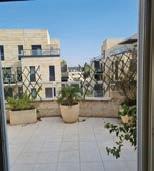

In the heart of BAKA enclosed in a magical courtyard: 3 bedrooms 2 full bathrooms one flight up. Beautiful spacious sukka terrace facing open gardens
Completely renovated with architectual design & high level finishes. 6,250,000 NIS



Eta Morris Realty, Ltd.

etamorrisrealestate@gmail.com
Eta: 054-723-3863 · Rachel: 052-546-6425
etamorrisrealty.co.il
did punish the guilty. He did pray for God to forgive the people. That was the theme of chapter 32. But in chapter 33, having restored order to the people, Moses now began on an entirely new line of approach. He was, in effect, saying to God: What the people need is not for me to be close to them. I am just a human, here today, gone tomorrow. But You are eternal. You are their God. They need You to be close to them.
It was as if Moses was saying: Until now, they have experienced You as a terrifying, elemental force, delivering plague after plague to the Egyptians, bringing the world’s greatest empire to its knees, dividing the sea, overturning the very order of nature itself. At Mount Sinai, merely hearing Your voice, they were so overwhelmed that they said, if we continue to hear the voice, “we will die” (Ex. 20:16). The people needed, said Moses, to experience not the greatness of God but the closeness of God, not God heard in thunder and lightning at the top of the mountain, but as a perpetual presence in the valley below.
That is why Moses removed his tent and pitched it outside the camp, as if to say to God: It is not my presence the people need in their midst, but Yours. That is why Moses sought to understand the very nature of God Himself. Is it possible for God to be close to where people are? Can transcendence become immanence? Can the God who is vaster than the universe live within the universe in a predictable, comprehensible way, not just in the form of miraculous intervention?
To this, God replied in a highly structured way. First, He said: you cannot understand
My ways. “I will be gracious to whom I will be gracious and I will show mercy to whom I will show mercy” (Ex. 33:19). There is an element of Divine justice that must always elude human comprehension. We cannot fully enter into the mind of another human being, how much less so the mind of the Creator Himself.
Second, “You cannot see My face, for no one can see Me and live” (Ex. 33:20). Humans can at best “see My back.” Even when God intervenes in history, we can see this only in retrospect, looking back. Stephen Hawking was wrong.1 Even if we decode every scientific mystery, we still will not know the mind of God.
However, third, you can see My “glory.” That is what Moses asked for once he realised that he could never know God’s “ways” or see His “face.” That is what God caused to pass by as Moses stood “in a cleft of the rock” (Ex. 33:22). We do not know at this stage exactly what is meant by God’s glory, but we discover this at the very end of the book of Exodus. Chapters 35–40 describe how the Israelites built the Mishkan. When it is finished and assembled we read this:
Then the Cloud covered the Tent of Meeting, and the glory of the Lord filled the Mishkan. Moses could not enter the Tent of Meeting because the Cloud had settled on it, and the glory of the Lord filled the Mishkan. (Ex. 40:34–35)
We now understand the entire drama set in motion by the making of the Golden Calf.
1 He famously said, at the end of A Brief History of Time, that if we were to reach a full scientific understanding of the cosmos, we would “know the mind of God.”
Moses pleaded with God to come closer to the people, so that they would encounter Him, not only at unrepeatable moments in the form of miracles, but regularly, on a daily basis, and not only as a force that threatens to obliterate all it touches, but as a presence that can be sensed in the heart of the camp.
That is why God commanded Moses to instruct the people to build the Mishkan. It is what He meant when He said: “Let them make Me a sanctuary and I will dwell (veshachanti) among them” (Ex. 25:8). It is from this verb that we get the word Mishkan, “Tabernacle,” and the post-biblical word Shechinah, meaning the Divine Presence. Applied to God, as discussed last week in parshat Terumah, it means “the presence that is close.” If this is so – and it is the way Judah Halevi understood the text2 – then the entire institution of the Mishkan was a Divine response to the sin of the Golden Calf, and an acceptance by God of Moses’ plea that He come close to the people. We cannot see God’s face; we cannot understand God’s ways; but we can encounter God’s glory whenever we build a home for His presence here on earth.
That is the ongoing miracle of Jewish spirituality. No one before the birth of Judaism ever envisaged God in such abstract and awe-inspiring ways: God is more distant than the furthest star and more eternal than time itself. Yet no religion has ever felt God to be closer. In Tanach the prophets argue with God. In the book of Psalms King David speaks to Him in terms of utmost intimacy. In the Talmud God
listens to the debates between the Sages and accepts their rulings even when they go against a heavenly voice. God’s relationship with Israel, said the prophets, is like that between a parent and a child, or between a husband and a wife. In the Song of Songs it is like that between two infatuated lovers. The Zohar, key text of Jewish mysticism, uses the most daring language of passion, as does Yedid Nefesh, the poem attributed to the sixteenth-century Safed kabbalist, Rabbi Elazar Azikri.
That is one of the striking differences between the synagogues and the cathedrals of the Middle Ages. In a cathedral you sense the vastness of God and the smallness of humankind. But in the Altneushul in Prague or the synagogues of the Ari and Rabbi Joseph Karo in Safed, you sense the closeness of God and the potential greatness of humankind. Many nations worship God, but Jews are the only people to count themselves His close relatives (“My child, My firstborn, Israel” – Ex. 4:22).
Between the lines of Exodus 33, if we listen attentively enough, we sense the emergence of one of the most distinctive and paradoxical features of Jewish spirituality. No religion has ever held God higher, but none has ever felt Him closer. That is what Moses sought and achieved in chapter 33, in his most daring conversation with God.
These weekly teachings from Rabbi Sacks zt”l are part of his ‘Covenant & Conversation’ series on the weekly Torah teaching. With thanks to the Schimmel Family for their generous sponsorship, dedicated in loving memory of Harry (Chaim) Schimmel. Visit www.RabbiSacks.org for more.

The primary theme of the special haftarah we read for this Shabbat Parah is that of Hashem’s promise of the future purification of Israel from her sins, as prophesied by Yechezkael HaNavi in the 36th perek of his sefer. This haftarah mirrors the topic of the special maftir reading (read annually on the Shabbat preceding Shabbat HaChodesh), that details the purification ritual that would be performed to remove one from the state of ritual contamination (“tum’ah”).
When commenting on the haftarah last year, we noted that its initial section decried the sinfulness of the nation. This, we felt, was a particularly difficult introduction to a reading that was meant to prepare us for the arrival of the joyous “Z’man Cheirutenu”, a celebration of our freedom. I shared with you the view of Rav S.R. Hirsch who explained that this “troubling” opening to the navi’s message was meant to fill the people with hope. This prelude to Hashem’s promise to purify the sinful nation was a message to Israel and meant to teach the exiled nation that it is possible for them to reach the very heights of purity from the deepest depths of moral defilement – described in these opening p’sukim.
HaRav Moshe Lichtenstein also directs our attention to this section, quoting the Yalkut Shim’oni (a compilation of older interpretations and explanations on the Tanach, dating from the 13th 14th centuries,
CE - the precise date is not known) that emphasizes the prophet’s description of the nation’s defilement as that of a niddah (menstruant). The Yalkut states:
“Just as a niddah becomes [ritually] impure but is [regularly] purified, so too Hashem will purify Israel. Additionally, unlike one who is defiled by contact with the dead whose house may not be entered by a Kohen, [even] the Kohen Gadol may enter the house with his niddah (wife) and sit with her on the same (solid) bench …..
Similarly, were Israel’s defilement compared to tum’at met (contact with a corpse) one might believe that G-d’s Shechina (divine presence) could never return to Israel. But just as the Kohen and his wife, G-d remains with Israel – even during their times of impurity”.
Rav Lichtenstein expands upon this approach by including yet another difference between these two sources of impurity. The niddah defilement imposed by the Torah is a result of a natural human condition, not one brought through conscious choice nor a purposeful decision. It is part of life’s realities.
Tum’at Met, although a result of the reality of a mortal life, is a condition that can, indeed, be brought upon the individual through conscious choice or purposeful decision. And the conscious act of causing the cessation of life is far from a natural deed. It is, perhaps, the most UNnatural of all human acts.
It is for this reason, Rav Lichtenstein
argues, that Yechezkel depicts the nation’s defilement as one of “Tum’at Niddah”, an impurity that results from sins that reflect the human state. Such actions mirror the weaknesses of Mankind: their foibles, their shortcomings and their “humanness”. Ultimately, therefore, they can be purified, for such sins are forgivable.
But those who purposely commit sins that are beyond the usual human “temptations”, acts that Hashem considers to be UNnatural and, indeed, INhuman, are considered to be defiled with Tum’at Hamet . Such sinners would require far more acts of remorse and atonement to remove the impurity. As opposed to the sins that are committed through the inherent shortcomings of human condition, these extreme actions reflect a corruption in the basic character of the sinner, a debilitating condition that requires a complete transformation of one’s value system.
Looking at society’s changing moral compass, I wonder if there still is any differentiation made between the two “defilements”.
Given the acts we have seen too often, I am forced to ask: Is any immoral act TOO immoral? Is there any moral outrage that is TOO outrageous? Has our society accepted ALL human acts – whether murdering children or slaughtering innocents – as part of an “understandable” human “foible”?
Morality takes on different definitions in different times and places. Right and Wrong, Tum’at Niddah and Tum’at Met, seem to change with the prevailing winds.
That is why we must have an eternal moral system.
And that is why we are blessed with the Torah!


Dovid HaMelech requested: םימת יבל יהי ךיקחב – “May my heart be perfect in your statutes” (Tehillim 119:80). The Midrash explains that the word “statutes” is in the plural to reflect two statutes (chukim). First, the korban pesah: It is written “Zot chukat haPesach” (Shemot 12:43) – “This is the statute of the korban pesach.” Second, “Zot chukat haTorah” (Bamidbar 19:2) is the statute of the para aduma.
What is the connection between the parah aduma and the korban pesach?
Why did Dovid HaMelech pray that his heart be sincere in the fulfillment of both of these statutes specifically?
Contrasting Chukim
Rav Asher Weiss offers an explanation. In the Midrash, there is not a comparison of these two different statutes, but rather, a contrasting. On the Seder night, we are encouraged to ask questions. Those people that are learned delve into an understanding of every nuance in the Haggada. We also do specific acts in order to trigger questions from our children (Minhat Asher Al HaTorah: Vayikra, Bamidbar, Devarim, p. 180, and Rav Asher Weiss on the Haggada, p. 309). Thus, the korban pesach is a symbol for asking questions: asking, searching, studying. For what other mitzva do we
have to state the reason for doing it? We keep saying, Al shum mah – “For what reason?” We have to go above and beyond in order to understand and internalize the message and customs of Pesach.
On the other hand, the mitzva of hukat para aduma is a mystery. Even Shlomo HaMelech admitted he does not fully understand the reasoning behind the intricacies of the statute of para aduma (Kohelet 7:23). Yet, even absent a clear understanding we are instructed to fulfill all of the details of para aduma.
These two chukim represent two approaches to mitzvot. Hukat haPesach involves striving to understand, searching, and yearning. Parah aduma requires us to accept what HaKadosh Barukh Hu dictates and to perform acts that are beyond our comprehension.
When are we meant to ask and investigate, and when are we meant to humbly accept Hashem’s commandments?
Rav Asher Weiss suggests we emulate Avraham Avinu. When asked to sacrifice his son Yitzhak, Avraham acts without questioning. He wakes up early in the morning and sets out on his journey. Yet after Avraham binds his son and lifts a knife to slaughter him, an angel calls out to Avraham instructing him to
cease and desist.
At this point, according to the Midrash (Bereshit Rabba 56:8, quoted in Rashi, Bereshit 22:12), Avraham begins to question. First Hashem says, “Yitzhak will be your heir,” and then He says, “Kill your son.” Now Hashem is commanding me, “Don’t kill him.” What is the meaning of all this?
However, why didn’t Avraham question Hashem’s request immediately? As long as Avraham Avinu had a responsibility to act, he asked no questions. He focused on fulfilling a command. Only after he is instructed to spare his son and no longer has an obligation to complete an action, he inquires more deeply in order to better comprehend Hashem’s intentions.

Perhaps that is also the explanation as to why Bnei Yisrael received two crowns for stating naaseh venishma. The gemara (Shabbat 88a) tells us that 600,000 angels descended and placed two crowns on the head of each individual at Har Sinai, one crown for having stated naaseh and the second for stating nishma. Why did we get two crowns? Bnei Yisrael did one great thing: We said naaseh before nishma. Why did we get a second crown for nishma?

The Minhat Asher explains that yes, the first thing they did was naaseh, that is, chukat hapara. We accepted the commandments unconditionally. Then, there was the hukat haPesach, and this involved searching, yearning, and trying to understand the messages of the mitzvot. That’s also what Bnei Yisrael committed to do.
Throughout most of the year we observe chukat hapara: obedience and unconditional fulfillment of Hashem’s commandments.
On Seder night in particular, we experience chukat haPesach, we delve into communal discourse to enhance our understanding of the Hagaddah.
May we be able to fulfill both of these chukim – chukat hapara and chukat HaPesach. Knowing when to act obediently and perform mitzvot and when to question and obtain a deeper understanding of the mitzvot.


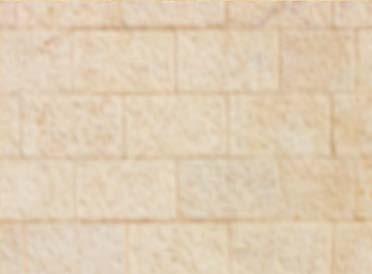





“Vayiten el Moshe ke’chaloto ledaber ito behar sinai sh’nai luchot ha’edut luchot even ketuvim be’Etzba Elokim – And (Hashem] gave Moshe, when He finished speaking to him on Har Sinai, two tablets of the Testimony, they were stone tablets, written with Hashem’s finger” (Shemot 31;18). The structure of the verse here is curious. It would seem to read more smoothly had it said, “When Hashem finished speaking to Moshe…He gave him...” Why the more cumbersome articulation?
Rashi (ibid) notes that the word “ke’chaloto - when he finished” is written without a “vav” and can also be read as “ke’kalato – like His bride,” as if to say, Hashem gave the Torah as a gift like a bride is gifted to her groom. Rashi further explains that Moshe Rabbeinu was unable to learn the entire Torah in such a limited time (40 days), so Hashem presented him with the Torah, including its wisdom and the capacity to understand it, as a gift. Therefore, this verse reflects the manner in which the Torah was given and can be understood as, “And [Hashem] gave the Torah as a gift to Moshe when He finished speaking to him.”
Rav Pincus in Tiferet Shimshon learns a
tremendous lesson from Rashi’s comment. It is impossible for the human mind to truly comprehend Torah as it is Divine wisdom, beyond mortal understanding. Our ability to learn and understand Torah is a gift from Above. This highlights how truly precious Torah learning is; it is an opportunity to learn, ka’viyachol, with Hashem as a chavruta. Each morning, when we say birkat HaTorah, “hamelamed Torah le’amo Yisrael,” we express our gratitude to Hashem for teaching us Torah directly every day.
Similarly, Rav Schwab in Ma’ayan Beit Hasho’eva, understands the word “ke’chaloto” as a descriptive, and offers a fascinating interpretation of the dialogue between Moshe Rabbeinu and the angels when he was in shamayim. “Mah le’yelud isha beineinu – what is a human being doing among us?” (Shabbos 88b). The angels protested, “Hashem, You have kept your Torah here in the heavens for 974 generations. Why are you now giving it to people on earth?” How could the angels even consider that Torah is relevant to them? Clearly, they have no parents to honor, no creative work to cease on Shabbos, they have no yetzer hara to steal or commit murder! There is so much in Torah that doesn’t apply to them! Notes Rav Schwab, Torah can be understood on myriad levels, from the most basic to the most sublime. Take the prohibition of murder,
for example. On the most elemental level we are admonished not to take another human life. On a deeper level, we are enjoined not to embarrass another, causing the blood to drain from their face. Yet a more abstract level is cautioning us not to cause others to sin. On a more metaphysical level, one who should teach and does not, is also considered as a ‘murderer.’ There is still a more exalted, pristine level of Torah that is appropriate for the angels.

Hashem taught Moshe Rabbeinu every mitzvah with its multiple nuances, from the most transcendent to the most concrete level which was conveyed as Torah she’bichtav at Har Sinai. This insight allows us to appreciate the vast depth and consciousness embedded in Torah and that it is possible to connect to the devar Hashem at any level, from any place.

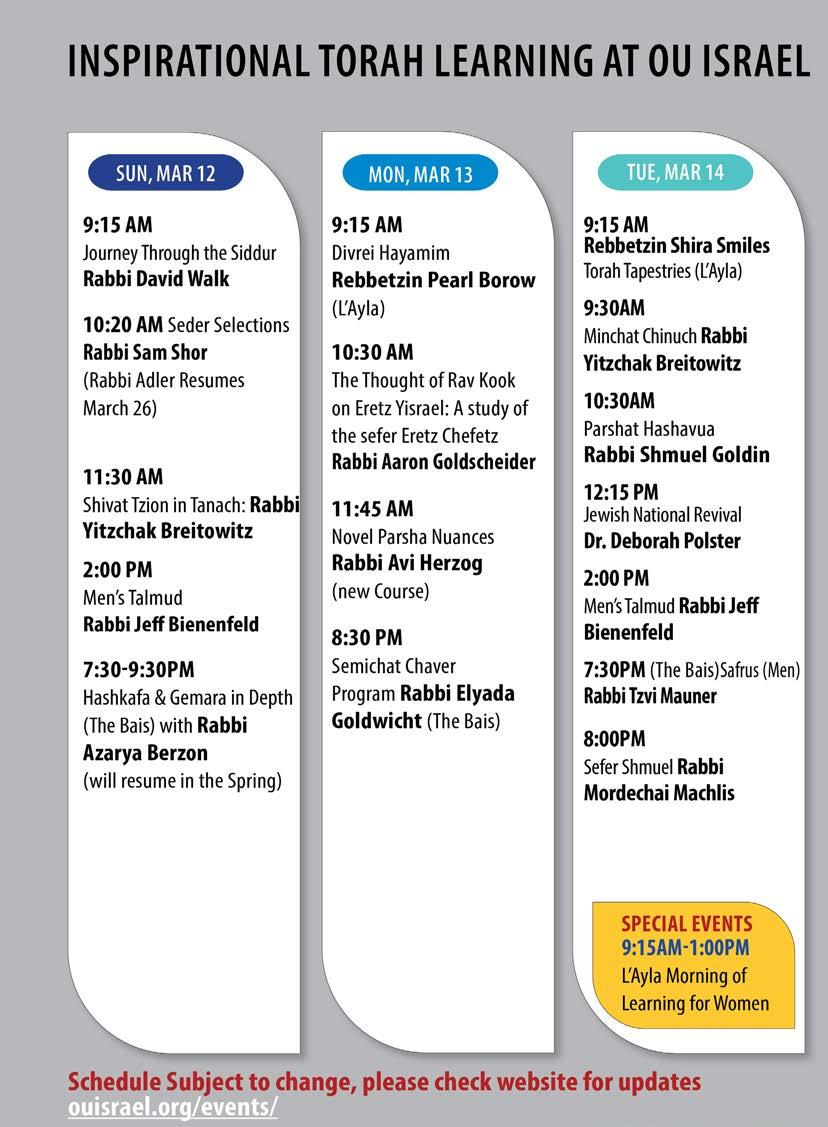


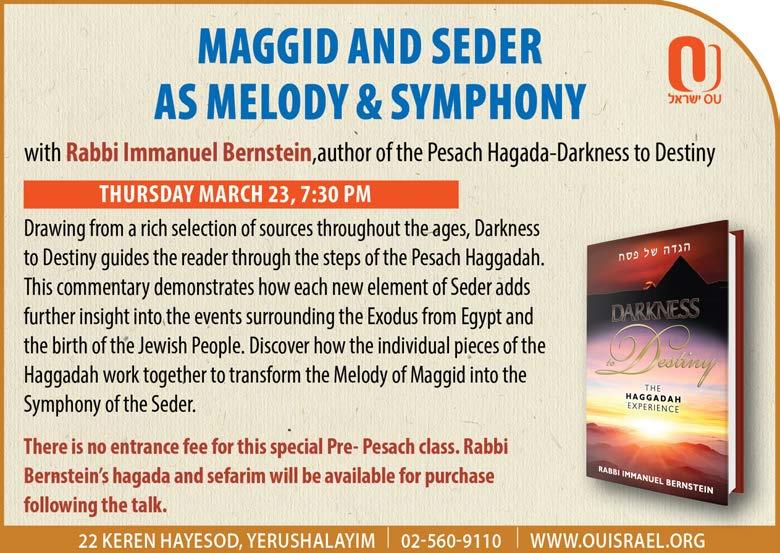





Director Hadassah Jacob 052-384-7230
Monday Evenings 7:00 - 9:00pm
Please note the updated mailing address for the OU Israel Center: OU Israel

22 Keren Hayesod
POBox 1441
Jerusalem 9101302
PRI HADASH
WOMEN'S WRITING WORKSHOP AT THE OU ISRAEL CENTER
Resumes March 13th:
Monday mornings 10.30-12.30
For more details, call Ruth 02-628-7359 or Judy 054-569-0410
יזכרמ
המלש
...
• Miriam Tovah Chaya bat
Chanah Elisheva Rivka
•Yosef Ezriel ben Chaya Michal
הלחמ ןב ןתנוהי •
רתסא ןב המלש •
הכרב הנח ןב השנמ םהרבא •
• Esther Fruma bat Baila
• Yisrael Leib ben Chana
• Chana Bat Bruriah
Give Pre-Purim Mishloach Manot to heroic IDF soldiers, including OU Israel Youth Centers alumni

Price: $18 / NIS 70
Donate through our website www.ouisrael.org/purim

Please note advertising deadlines thru PESACH:
Shabbat March 17-18
(Vayakhel-P’kudei)
deadline for ads: Sunday, March 12
Shabbat March 24-25 (Vayikra)
deadline for ads: Sunday, March 19
Shabbat March 31-April 1
(Shabbat Tzav-Hagadol/Pesach/ Sh’mini)
deadline for ads: Thursday, March 23
Shabbat April 21-22 (Tazria-Metzora)
deadline for ads: Sunday, April 16
Shabbat April 28-29
(Acharei-K’doshim),
deadline for ads: Thursday, April 20
please email or call Ita Rochel ttads@ouisrael.org/ 02-5609125

Monday, March 6th - Rabbi Goldscheider’s shiur is sponsored by Hillel Goldscheider in memory of Elisha Chanina z”l Rabbi Goldscheider’s shiur has been sponsored for the 2023 Academic Year
ל’’ז המלש ןב בוט םשו ה’’ע םהרבא תב םירמ תמשנ וליעל Rebbetzin Shira Smiles shiur is sponsored for the 2023 academic year by Dr. & Mrs. Menachem Marcus in memory of their parents, Rose & Dr. Emanuel Marcus z”l -
ל”ז סוקרמ השמ ןב יכדרמו ריאמ ףסוי תב לזייר Rosi and Ernest Strauss z”l -
ל”ז סוארטש דוד ןב לאינדו םהרבא תב דומיל
Rabbi Breitowitz’s Tuesday Shiur - Minchat Chinuch is sponsored for the academic year 2023 by Rabbi Refoel & Sharon Auman in memory of their parents Edith & Reiner Auman z”l
ד”יה לאפר תב ה”ע רתסאו ל”ז קודצ ןב הנוי and their son Rabbi Shmuel Eliyahu Auman z”l
י”נ לאפר ברה ןב ל”ז והילא לאומש ברה
Rabbi Goldin’s shiur is sponsored for the 2023 academic year by Dr. & Mrs. Menachem Marcus in memory of beloved aunts
Irma Haas a”h and Hilde Myer a”h
Rabbi Manning’s shiur
has been sponsored for the 2023 academic year
ל’’ז ןמלק ןב גילזו ה’’ע תידנרב תב הנרב תמשנ יוליעל
Rabbi Taub’s weekly Thursday Parshat HaShavua Shiur is sponsored by The Jewish Legacy Foundation
32 HaOmer St., Efrat




NIS 4,950,000 Brokerage fee: 2% + VAT

A beautiful 180 sqm semi-detached home on three levels, in excellent condition. An amazing open view, and a pastoral atmosphere! Large and spacious living room, beautiful and upgraded kitchen.
5 BR, sealed room (mamad), 2 private parking spaces, front and 160 sqm back garden, air conditioning, and window bars.
On the basement floor there is the possibility of an expansion of another 60 sqm.
The property is in a central but quiet area, within walking distance to kindergartens, schools, synagogues and more. Close to parks, a nature reserve, and playgrounds.
NIS
A 5BR, 176 sqm cottage for sale in the Te'ena neighborhood, in a quiet and pastoral location. Near a commercial center with shops and restaurants, synagogues, and parks. A property with tremendous potential! A cute garden, and a sukkah balcony. Basement floor with sealed room (mamad), master suite in the attic with a sunny balcony with an open view. Requires renovation.
Vasl Resident of Efrat
Bikey McBikeface is an ambucycle named in honor of Yoni Jesner, a Scottish 19-year-old who lost his life in a terrorist attack in Tel Aviv in 2002. Jesner's friends raised funds to donate the vehicle in his memory back in 2017 and chose the quirky name, inspired by the humorous name of a British research vessel that captured international attention, Boaty McBoatface.
Bikey McBikeface has served as a valuable asset to United Hatzalah, helping its various drivers save many lives over the past six years. However, with the vehicle nearing retirement age, the organization is calling on supporters to donate, even small amounts, to carry on Yoni's legacy and donate towards a new ambucycle that will carry on Bikey’s, and Yoni’s legacy.

Donors who contribute to the campaign can suggest a name, with the final choice to be determined by a public vote. The person whose name is chosen by the popular vote will also get the opportunity to submit a dedication text that will be placed on the ambucycle as well.

One of the many rescues the Bikey, and his current Rider Michael Cassar responded to was the November 23rd double bombing that took place in Jerusalem.
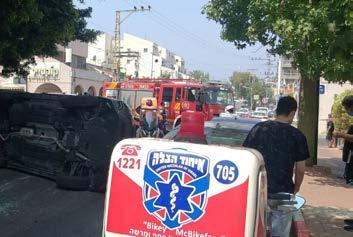
Michael, together with Bikey, raced to the scene of the explosion that took place near the city entrance and arrived to treat the victims of the horrendous attacks. Michael triaged the injured people, tending first to those who were most severely injured and providing critical lifesaving interventions. He applied tourniquets and trauma bandages to stem bleeding and administered high-flow oxygen. Michael also treated wounds and lacerations caused by shrapnel from the explosive device, which was laced with deadly nails and sharp objects. Michael then assisted other first responders to transfer the injured to ambulances which whisked them to the hospital for further treatment.
This is just one of the many medical emergencies that Bikey and his various riders have responded to over the years and some of the people treated that day were saved in memory of Yoni Jesner, another victim of terror. Please help us keep this legacy going.
To make a donation and submit a name for consideration please see the ad to the right.
HELP US NAME THE NEXT BIKEY MCBIKEFACE.

CARRY ON THE LEGACY OF TERROR
VICTIM YONI JESNER.
EVERY DONATION IS ELIGIBLE TO SUBMIT A NAME FOR THE NEW AMBUCYCLE.


THE FINAL NAME WILL BE CHOSEN BY POPULAR VOTE.


https://israelrescue.org/younameit

Rav Simcha Wasserman, the renowned rosh yeshivah and pioneering educator, was the eldest son of the martyred gaon, Reb Elchonon, Hy’d. A ‘down to earth’ talmid chacham, Rav Simcha was beloved for his sensitivity, openness and approachability. Although the Wasserman’s were not blessed with children of their own, they dedicated themselves to rebuilding Torah institutions, establishing yeshivos in Strasbourg, Detroit, Los Angeles and Yerushalayim. In this way, they raised thousands of students across the world.

Rav Simcha’s holy father had been murdered in Kovno, and his entire world was lost. Since then, he would soldier through life, with incredible faith and strength, and seldom speak about or show emotion about his losses in the War. However, one time of year, on Parshas Parah, he would receive the Maftir aliyah and recite the Haftarah which contains the End-of-Days prophecy of Yechezkel (11:19):
When Rav Simcha came to this line, his voice would choke and he would break down and weep copiously. Every year, approaching the redemption of Pesach, he allowed himself to soften, open his heart and feel everything that he had gone through.
We usually think that a lev even, a ‘heart of stone’ is undesirable; a hardened, closed heart implies we are not in touch with our feelings, emotions and true desires. However, the Chasam Sofer says, in exile, the heart of stone is really a gift, a coping mechanism we are given in our excruciating exiles, allowing us to survive. The suffering, travails and hardships we experience in galus can just be too much to consider fully and feel deeply. If we were to be completely vulnerable and open, we would crumble under the weight of our collective suffering and lack the strength to continue on in our service of Hashem. With the dawn of redemption and the End of Days, we will be granted respite from the travails of galus and finally have the opportunity to reflect, take a deep breath, open our hearts and fully process the entire experience of our personal and communal history.
“And I shall give them one heart, and a new spirit I shall place within them, and I shall remove the heart of stone from their flesh, and I shall give them a heart of flesh.”
Parshas Ki Sisa details the laws of the Red Heifer, a tikun for Am Yisrael following their falling into a state of impurity with the Eigel haZahav, the Golden Calf.

When Moshe ascended to the upper worlds to petition Hashem in prayer on behalf of his fallen people, the Midrash teaches that he found the Ribbono shel Olam learning (as it were) the parsha of the Parah Adumah: Zos chukas haTorah…. Hashem said to Moshe: Eini osek elah b’taharasan shel Yisrael, “I busy Myself only with the purity of the Jewish People!” (Pesikta Rabbasi, 14)
In the days of Moshiach, Hashem will ‘be busy’ extricating us from the depth of our exile. He will metaphorically sprinkle us with pure waters like those being cleansed from tumas meis, the ritual impurity of coming in contact with death. He will renew within each of us a pure heart and a
spirit as befitting His beloved ones. He will replace the emotional armor of our battles with a deep sensitivity, allowing us to feel His healing Presence and giving us all a new beginning in Eretz Yisrael.
“I will give you a heart of flesh, LeV BaSaR….” The Midrash suggests reading the word not as BaSaR but as BoSeR, “glad”. Rebbe Nachman says this means everyone will be glad at their friends’ good fortune. (
Chayey Moharan #339)
A heart that hurts, that feels, is a heart that is totally alive. As we approach our redemption, may we open our hearts to hold and relieve the pain of those who are not yet able to feel completely, those who are soldiering through life for Hashem. And may we merit to tearfully rejoice with them on the day that their good fortune is fully revealed.
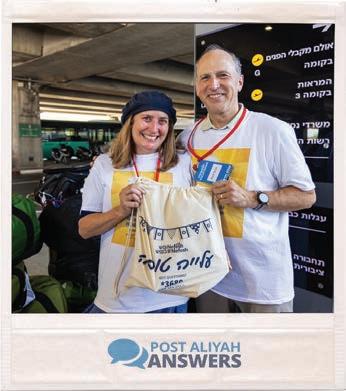
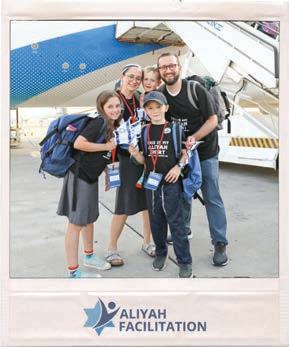

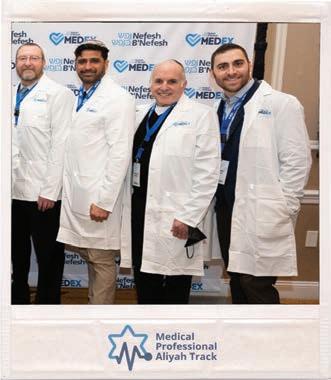


SUNDAY EVENING, APRIL 16, 8:00 PM in the Pelech Girls school – 31 Yehuda St., Baka but ONLY by prior registration and payment
Cost: 100 NIS per person
Ifyou registerbeforePesach,(April5)you’ll receivea Destinygiftworth100NIS!

Limited seating. (Price of the film ticket increases after Pesach [April 5] to 180 NIS per ticket!)
If you cannot be in Jerusalem the night of the Premiere, you can still see the film in your home on Sunday evening April 23 at 8 PM ON ZOOM (exactly one week later)
100 NIS on Zoom per family
BECOME A DESTINY SPONSOR OF THE PREMIER AND SUPPORT RABBI WEIN & DESTINY

Best seats, light dinner & meet privately with Rabbi Wein before the film 500 NIS per couple
For questions, sign up forms, information, payment, email Shira at abarbanelmovie@gmail.com or WhatsApp 0547-54-36-18
This Shabbat we will read Parshat Ki Tisa as well as Parshat Parah, the third of the four special parshiot which surround the days of Purim and Pesach.
Parshat Ki Tisa contains the tragic episode of Chait HaEgel, the Golden Calf, and its aftermath. Parshat Parah is comprised of the opening verses of Parshat Chukat,which introduce us to the mystical elixir for impurity, the mysterious inexplicable concept of the para aduma -the red heifer.
The Bat Ayin, the Rebbe of Avrich zy’a, points out that the para aduma is on some level meant to be a tikkun(fixing.correction) for the impurity introduced into the world through the Cheit HaEgel(The Sin of the Golden Calf). The Rebbe taught:
Our Master the Toldot Yaakov Yosef, zy’a, wrote that Cheit HaEgel impacted future generations, and that the word egel is an acronym for the words arayot(illicit behavior), gezel (theft) and lashon hara(inappropriate speech).
So too, the tikkun for all of these,as represented by the para aduma, also comprises an acronym for the word egel-Avoda,Gemilut chasadim and Limud Torah...
BY RABBI SAM SHOR Program Director, OU Israel Center

The Bat Ayin taught that the para aduma not only provided a metaphysical healing for those who had come into contact with impurity, but also came to teach us how to overcome the impact that resulted from the Cheit HaEgel.
One of the perplexing aspects of the Para Aduma ritual, is that the Kohanim who were involved in preparing the ashes of the para aduma became tamei-impure through the process. In preparing the mystical compound which would return others to a state of purity, they in turn became tamei-impure. How exactly are we to understand this unusual outcome? How could it possibly be that in preparing this remedy for impurity, the Kohanim themselves are rendered to be tamei?
The Avodat Elazar, the Admor of Kozhnitz zy’a,explains this peculiar phenomenon based on the opening verse-Zot Chukat HaTorah-This is the inexplicable principle of the Torah.
This verse, the Rebbe explained, is not
only describing the mysterious nature of the para aduma, but also teaching us a very fundamental idea about Torah itself. Like any remedy, when channeled appropriately it can transform and cure and bring complete healing, or if chas v’shalom it is misused, taken out of context and applied inappropriately, then it can bring further deficiency and harm.
The Netivot Shalom, the Admor of Slonim zy’a offers a different interpretation of our verse Zot Chukat HaTorah. Our verse, explains the Rebbe, is not only introducing us to the transformative capacity of the para aduma as a vehicle to restore purity, but also communicating an eternal message which applies even now in the absence of the Beit HaMikdash and of the para aduma.
Zot Chukat HaTorah- In our current state, in the absence of the Beit HaMikdash and with no para aduma, the vehicle for we as Jews to experience some form of a return to purity is by immersing ourselves in the study of Torah-Zot Chukat HaTorah!











Yehi Ratzon that our limud haTorah, should indeed bring purity to our minds and hearts,that we should find purity in our avodat Hashem and though acts of chesed, and that we soon merit to experience the building of the Beit HaMikdash, and the return of all its associated sacred rituals and constant miracles.




Up in heaven, Moshe Rabeinu had not yet heard the disastrous news. Preoccupied with the stony luchot he was unaware of the debacle unfolding below. The magic of Matan Torah had faded and the commitments of עמשנו השענ proved to be brittle. The nation of Hashem had quickly degenerated into idol worship and wild debauchery. Moshe was instructed to immediately descend the mountain to witness, firsthand, the moral decline of his nation. The luchot, etched with Hashem’s letters, would not last long.

Subsequently, Hashem threatened to annihilate Am Yisrael and reboot history with Moshe as the founder of a new chosen nation. And then, shockingly, Hashem
dubbed us with a seemingly derogatory term. In the past, He had promised that we would be His valued treasure or הלוגס םע and that we would be a nation of nobility. At this disgraceful moment of national dishonor Hashem disapprovingly framed us as an obstinate nation or an ףרוע ישק םע.
Despite the dramatic miracles we had witnessed, and despite hearing the directly revealed voice of Hashem at Har Sinai, we were too headstrong to obey Hashem’s very simple instructions. Most of the Torah had yet to be delivered, but we had already been warned three times not to indulge in pagan worship. Yet, the moment that Moshe tarried in his return from the mountain, our faith wilted and we shamelessly crafted a golden image, casting aside all our promises and all our faith.
Our stubbornness would resurface hundreds of years later. In the desert, our stubbornness prompted the egel misadventure, but in the first Beit Hamikdash era our
persistent recalcitrance doomed us to our first exile. During this extended period of moral decay Hashem sent numerous nevi’im to rebuke us hoping to correct our religious malfunction. Stoutly refusing to heed their sincere appeals, we also murdered and imprisoned some of these divine agents.
In the desert we had been too wooden-headed to follow simple instructions and to appreciate the grand miracles we had experienced. During the first Beit Hamikdash era we were too obstinate to follow the desperate pleas of Hashem’s messengers who risked their lives to voice unpopular but necessary moral reprimand.
By labeling us as ףרוע ישק, Hashem wasn’t just criticizing our failures; He was also describing our national character. Our obstinacy, though toxic when left unchecked, is also an invaluable asset of Jewish history. In his Sefer Hakuzari, Rabbi Yehuda Halevi asserted that Hashem chose our people because we displayed the two instinctive character traits absolutely vital for our historical calling: the ability to process supernatural information and our relentless stubbornness. Knowing that we would face a hostile world, opposed to our mission, Hashem selected a stout people capable of withstanding scorn and hostility. Appreciating the possibility and even likelihood of Jewish exile, Hashem selected a toughnecked people who wouldn’t break under the pressures of history.
From the very outset of Jewish history, even before our journey to exile, our audacity came in handy. What other nation would have the brazen nerve to stand beneath a

fiery mountain, engaging with the booming voice of Hashem? As the Midrash comments
םהל ןתיל ה”בקה אבשכ ,םישק םהש ךל עדת :ןמחנ בר רמא רקובה תויהב ישילשה םויב יהיו“ :םהב ביתכ המ הרותה תא
דאמ קזח רפוש לוקו רהה לע דבכ ןנעו םיקרבו תולוק יהיו”. This midrash doesn’t bemoan our boldness but acknowledges that without this stoutheartedness we could not have withstood Sinai. Only a stiff-necked people could face the infernal fire atop the mountain and not turn their heads away.
Though critical of our obstinacy during the egel, Hashem Himself realized that only a brawny nation would be capable of accepting the divine will and of subscribing to a monotheistic religion. Nations of lesser bravery would have folded. During the egel, our excessive stubbornness sabotaged our relationship with Hashem. However, throughout history it would preserve that relationship.
During the long night of Jewish exile it would take all of our considerable stubbornness just to survive a two thousand year onslaught. Had we not been ףרוע ישקit is unlikely we would have survived this dark tunnel of history. Or as the midrash reports
,יאנגל אוהש רובס התא :ימא ’ר םשב אפידר רב קחצי ’ר רמא בולצ וא ידוהי וא :םחבשל אלא וניאו- Rebbi Yitzchak bar Radifa affirmed that our stubbornness
emboldened us to face relentless religious pressure throughout our exile. Throughout our history we declared: “either we remain Jewish, or we are prepared to die”.
In our early history our obstinacy produced the egel and wrecked the Mikdash. Later on, it preserved our religious faith amidst a maelstrom of religious persecution and unending pressure to abandon our ancient faith. Sometimes it pays to be stubborn in all the right ways.
20th Century Obstinacy
In the 20th century we drew upon this national trait of tenacity in facing two unprecedented historical challenges. We endured a nightmarish Holocaust which would have ripped the faith out of every other nation. To be honest, many Jews lost their faith in the Holocaust, and you must never judge a person before you walk a mile in their shoes. However, as a nation, we have rebuilt our communities, revitalized our Torah commitment, and steadfastly refused to buckle in the face of such unspeakable tragedy. Our stubborn commitment to Hashem allowed us to pass through the gates of hell and remain committed to our covenant and to our love for Hashem.
5 minutes from Emek Refaim, 40 min walk from the Old City, 6 bedrooms - sleeps 15+,
5 bathrooms, 3 floors, 200m, large kitchen, large yard (with basketball hoop), Strictly Kosher
Available March 30 - April 17
For more details: 052-238-0638
Robert@kleimanrealestate.com
A few years afterwards we were beckoned home. We anticipated a hero’s welcome, but, instead, were contested by an entire world. Once again, as our ancestor Avraham, we stood on one side of the river in opposition to an entire world which disclaimed our right to our ancient homeland. But we are too stubborn to simply walk away. Despite the improbable odds, we secured our state and turned her into a global superpower.
Evidently, Hashem chose well. More compliant people would have less stamina and less historical insolence. Sometimes our stubbornness creates havoc and dooms our moral behavior. However, for the past two thousand years it has been indispensable in helping us navigate the crosswinds of history and in resettling the plains of redemption.
So, the next time you are frustrated by a Jew and their stubborn behavior, just know that you are not alone. Hashem is also frustrated, sometimes. Jews are born stubborn and without this obstinance we would not be here today.
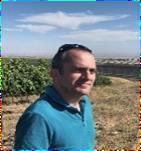
Now that we have returned home to conclude history, it is actually time to turn our necks around and look back at our history. When we were stuck in the mud of history it was difficult to make sense of the process. Now that we have emerged from the tunnel of history it is easier to appreciate the fearsome challenges of Jewish history, which brought our people such glory but also exacted such a heavy price.
Our stiff necks have navigated us home. Now that we are home, look back at our stiffnecked refusal to look back. Turn your head around, and appreciate how stubborn we have been. Hashem chose well. We are too stubborn to believe otherwise.


Great Investment! 2 rooms, mirpeset, underground parking, in new building under construction, great location. Starting at 1.89m shekel. 3 & 4 rooms also available. Baka very close to Emek Refaim, 4 rooms, 82m in a tama 38 building. Elevator, mirpest & storage. Will be ready in 3 months. Amazing price of 2.99m shekel.
For rent in the German Colony on Emek Refaim street, 2 rooms, one floor up, good shape, parking. 5,100 a month.


Only in the Land of Israel is it possible to also draw joy (simcha) from its very source. However, outside of the Land it is not possible to draw out joy on account of the ‘prosecution’ and the sternness of ‘strict justice’ that endures in the exile…(Eretz Chefetz 4:9)
Rav Kook’s assertion that true joy can be fully accessed only in the Land of Israel is actually expressed in Halacha. One example of this is with regard to the practice of Birkat Kohanim (the Priestly Blessing).
The mitzvah of Birkat Kohanim is indeed not restricted to the Beit Hamikdash or to the Land of Israel (Rambam, Sefer Hamitzvot, Positive mitzvah 336). Yet, the custom developed, among Ashkenazi Jews, that Birkat Kohanim only be recited on the major festivals when outside the Land. Why?
One answer: The benediction which is meant to disseminate God’s blessing requires joy. Only in Israel is joy accessible on a daily basis. This is the opinion of the Rama: “In the countries [i.e. Ashkenazim], we only say Birkat Kohanim on Yom Tov, as then we are filled with happiness and joy. This is not the case on the rest of the days of the year as people are worried about their jobs and livelihood. Even on Yom Tov, we
only say it during mussaf, as that is when people are leaving shul and filled with the happiness of Yom Tov (Rama, Orach Chaim, siman 128, se’if 44).
We find that the first Rebbe of Lubavitch made the same claim:
The custom in all these lands [e.g., Ashkenazic custom] is that the Priestly Blessing is conferred only on yom tov [i.e., holiday], because then people are in a joyful and festive mood—and “only one who is glad of heart shall bless.” On other days, by contrast, even on Shabbat, [the kohanim] are preoccupied with their livelihood and their loss of working hours, and they are not in a happy state of mind. Indeed, even on yom tov the Priestly Blessing is conferred only in the Mussaf service, when [directly afterwards] they will leave the synagogue and partake of refreshments and rejoice in the celebration of the festival. (Shulchan Aruch HaRav, Orach Chaim 128:57)
In other words, since the Priestly Blessing is meant to be conferred in a spirit of joy, and the holidays specifically are a time to rejoice, it is performed only then. Apparently, the Land of Israel offers its inhabitants an atmosphere of tranquility found nowhere else.
Rabbi Chaim Volozhin was the main disciple of Rabbi Eliyahu of Vilna, known as the Vilna Gaon. He notes that his teacher greatly desired that Birkat Kohanim be




Premium delicious shabbes meals



Openning hours:


Thursday 12 pm-2 am
Friday 8 am-3 pm
02-9964469 | 054-8777347


One person’s trash is another person’s treasure…
We buy gold, silver, coins, Judaica, old sifrei kodesh, banknotes, medals, collectables, antiques, sports memorabilia and more. Ran: 054-5561223
instituted every day in his synagogue. After hesitating, he finally decided that the next day the kohanim of his synagogue would do Birkat Kohanim. That very same day he was placed under arrest by government authorities. Apparently, Heaven prevented him from acting on the matter.
Rabbi Chaim continued that many years later, he too instructed in his own synagogue that on the next day the Birkat Kohanim should be recited. But that night the synagogue burned down. From all this it was clear to him that the matter was not supported by Heaven. Strikingly, this episode is referenced in the halachic work Aruch Hashulchan in his discussion why Birkat Kohanim is not observed outside the Land (Aruch HaShuchan 128:64). (See also Aliyot Eliyahu (Jerusalem 5749) pp. 57 58, see also Hilchot HaGra uMinhagav, p. 124)
Rabbi Menachem Mendel Schneerson suggested in one of his sichot that today the blessings of the kohanim in the Land of Israel are diffused throughout the Diaspora. (Likkutei Sichot vol. 39, p. 375) (The above information is culled from the Chabad.org article “Why is the Priestly Blessing only on Yom Tov?)


Rabbi Jonathan Sacks argues that whenever the Torah speaks of joy it is always shared joy.
“Simcha, joy, in the Torah, is never about individuals. It is always about something we share. A newly married man does not serve in the army for a year, says the Torah, so that he can stay home “and bring joy to the wife he has married” (Devarim 24:5). You shall bring your offerings to the central sanctuary, says Moses, so that “there, in the presence of the Lord your God, you and your families shall rejoice in all you have put your hand to, because the Lord your God has blessed you” (Devarim 12:7). The festivals, as described in the book of Devarim, are days of joy, precisely because they are occasions of collective celebration: “you, your sons and daughters, your male and female servants, the Levites in your towns, and the strangers and the fatherless the widows living among you” (Devarim 16:11). Simcha is joy shared. It is not something that we experience in solitude.” (The Pursuit of Joy, Rabbi Sacks on the Parsha, OU Torah).
Perhaps, Rav Kook is also suggesting that Jewish living outside the Land is a splintered and disintegrated existence. The unique blessing on seeing a gathering of six hundred thousand Jews can only be recited in the Land of Israel. The joy engendered on seeing that scene is incomplete without being in the Land. The Land wed to her people arouses in the Jew a sense of joy and true delight.



























Question: I give a shiur to a few people before Shacharit and aim to finish when davening begins, with Rabbi Yishmael/ Kaddish D’Rabbanan. Sometimes we are not quite finished then, in which case, we try to answer Kaddish’s main recitations, although we sometimes get caught up and fail to respond. Someone complained that continuing to learn during Kaddish is assur and a disgrace to Kaddish and the people listening to it. I don’t see it that way but said I would ask.
Answer: It is good that you plan to finish by Kaddish. Hopefully you learn with your tallit and tefillin on and have davened up to there. It would be a shame to either need to skip parts of P’sukei D’zimra, speed through it, or be behind the tzibbur. We will focus on Kaddish, as you ask.
There are three possible objections to a shiur continuing during Kaddish: 1. Listening/answering Kaddish has innate precedence over learning; 2. The learning
can transmit one’s rejection or disregard for Kaddish’s content. 3. The learning can disturb those trying to focus on Kaddish.
1. One may/should answer the main responses of Kaddish, Kedusha and Barchu in the midst of almost any part of davening (Shulchan Aruch, Orach Chayim 66:3). The only debate is whether this is so if one who is davening in one minyan should respond to what he hears from another minyan. On the one hand, there is no Kaddish quota, so that any prompt makes responding important (Igrot Moshe III:89). Others say that the sources on non-participants responding are to permit answering, not obligating it, and so in multi-minyan locations (e.g., the Kotel) one does not have to harm his tefilla by having his focus wander from minyan to minyan (see Tzitz Eliezer XI:3; Yabia Omer VI, OC 20).
Only the study of the loftiest scholars (see Shabbat 11a) can push off the normal requirements of tefilla (Igrot Moshe OC II:27). Some people opt to learn Torah during chazarat hashatz, and even there most poskim oppose it (Mishna Berura 124:17; Kaf Hachayim, OC 124:16). On the other hand, the problem may be that less learned people will speak/not listen without a good reason (Mishna Berura ibid.). Therefore, some permit learning Torah in one’s head (see Dirshu 124:27). However, during Kaddish and Kedusha, one’s mind must be only on them, not learning
The Orthodox Union - via its website - fields questions of all types in areas of kashrut, Jewish law and values. Some of them are answered by Eretz Hemdah, the Institute for Advanced Jewish Studies, Jerusalem, headed by Rav Yosef Carmel and Rav Moshe Ehrenreich, founded by HaRav Shaul Yisraeli zt”l, to prepare rabbanim and dayanim to serve the National Religious community in Israel and abroad. Ask the Rabbi is a joint venture of the OU, Yerushalayim Network, Eretz Hemdah... and OU Israel’s Torah Tidbits.

 (Mishna Berura 125:1).
(Mishna Berura 125:1).
2. If one is among a minyan who are up to Kri’at Shema, he must say the first pasuk along with them, even if he has already recited Kri’at Shema, in order to not appear reluctant to recite his allegiance to Hashem (Shulchan Aruch, OC 65:2). Poskim extend this idea to other central parts of davening, including such a major joint recitation of praise to Hashem as Kaddish (see Igrot Moshe ibid.). When one is at a minyan, not answering a different minyan need not look a rejection (Tzitz Eliezer ibid.). However, in your case, learning audibly in the beginning of your minyan is publicly indicating that joining everyone in declaring praise of Hashem is not at the top of your priorities, which is included in this problem.
3. The local rav or gabbai can best consider the technical and communal elements of what is an unacceptable disturbance to others. However, the concept is generally applicable. We note that the Mishna Berura (566:12), regarding the minhag to collect tzedaka on a fast day as a “kofer nefesh,” says that the gabbai should not go around announcing it during chazarat hashatz because it disrupts concentration.
The remaining question is whether these matters apply to the entire Kaddish or just the public’s responses. Regarding chazarat hashatz, l’chatchila one is to listen to every word but answering the berachot (while knowing which one is being said each
time) is sufficient b’di’eved (Mishna Berura 124:17). However, regarding Kaddish, the need to listen to every word seems stronger (Mishna Berura 125:1).
In terms of bottom line, your shul-mate is right. Since stopping learning “on a dime” is difficult, try to stop a little earlier, making Kaddish the absolute endpoint.

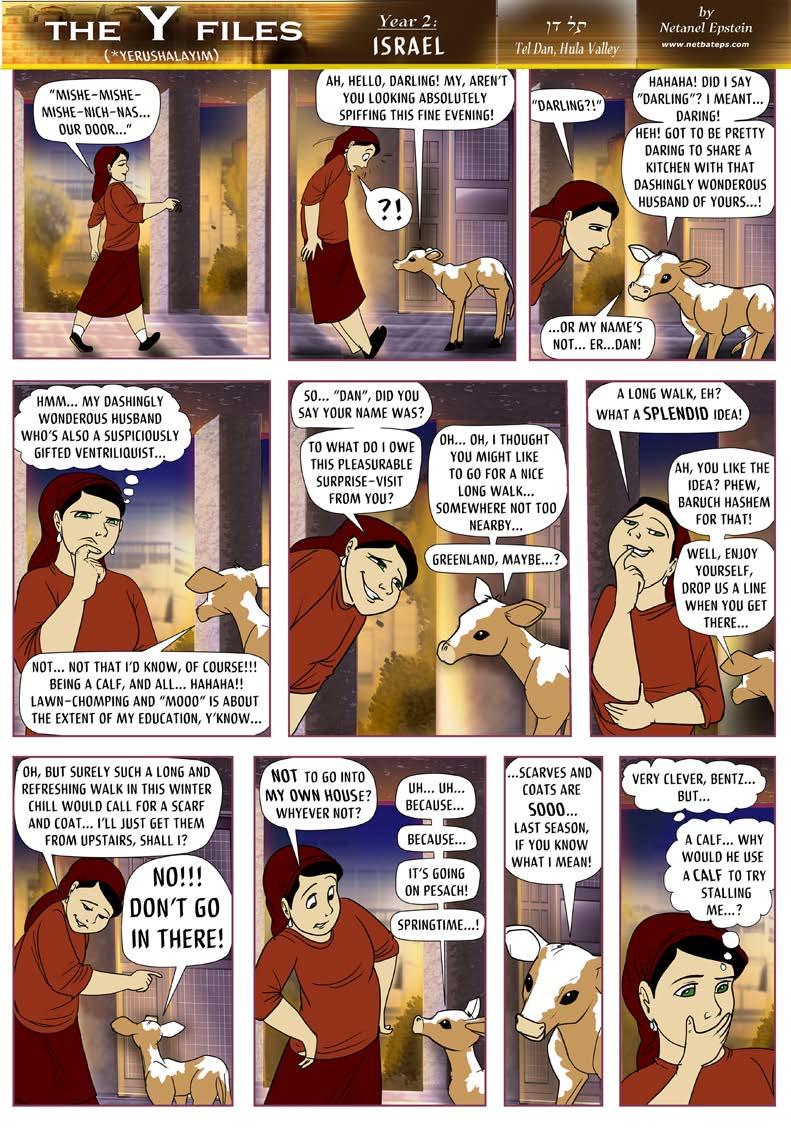



It says in this week’s parsha:
We all learned in kindergarten that after Moshe saw the Jews dancing with the egel hazahav he broke the luchos. Have we ever asked ourselves, how is it possible that Moshe broke the luchos ?! There’s no way that this was done impulsively out of anger.… What happened here?
Rav Mottel Zilber shlit”a teaches in the name of various tzadikim that although b’pashtus the breaking of the luchos could be seen as a personal aveirah for Moshe, the reason that Moshe did it was because he couldn’t see a reality in which he would walk alone as the only tzadik in town. If then, Am Yisrael as a whole would be considered sinners. Therefore, he decided to do an act which seems like an aveirah to include himself with the rest of Klal Yisrael.
It is brought down in the Gemara: “Rabbi Yoḥanan ben Nuri: One who rends his garments in his anger, or who breaks his vessels in his anger, or who scatters his
money in his anger, should be like an idol worshiper in your eyes” (Shabbos 105:)
From this we see that the breaking of the luchos was an act done by Moshe to remain unified with the rest of the nation. Moshe’s goal was more than just to be a part of the whole, he didn’t want to tag along for fun, he wanted to bring himself to be a part of klal yisrael so he would be able to bring the rest of the nation to do teshuvah together with him!
The message is clear, one’s personal avodah is crucial! Yet, without a constant shaychus to klal yisrael it isn’t worth it. We should be zocheh to uplift ourselves together with the entire klal yisrael!!
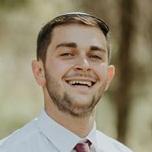

In the Gemara Masechet Rosh Hashana Daf 17b Rabbi Yochanan says that the 13 middot are considered a prayer for the Yamim Noraim. The question is when we look at all of the 13 middot it just looks like a list of all of Hashem’s attributes. In what way is this a tefilah? We aren’t asking for anything we need.
To answer this question we need to take a step back and look at the whole picture. The 13 middot are brought up in this week’s
parsha, as a response to a chain of events that started with the Chet Ha-egel. After Bnei Israel sins and Moshe begs Hashem to forgive them, Hashem acquiesces but refuses to lead them himself. Moshe does not like Hashem’s decision and says:
Hashem then accepts Moshe’s prayer and agrees to continue leading Bnei Yisrael

In the heart of calm and pastoral BAKAPrivate arab house, 6 rooms, 500m + possibility of building 250m, huge garden, approx. 700m, completely renovated, underfloor heating + a/c, large parking, 5 bathrooms, 5 toilets, green
MENDEL 0528980111
BAKA - New penthouse, 4 rooms in a small luxurious building with character, alone upstairs, 3rd floor + elevator, 4 orientations, 3 toilets, 2 bathrooms, terrace / sukkah, 70m, parking, store-room
Numerous places in the Gemara refer to how we must imitate Hashem. All the examples brought by the Gemara of which middot to follow are from the 13 middot. Hashem is showing Moshe not only what to say but what to do! In other words, when we say to Hashem that He is merciful we are actually saying – and so would we like to be. The Gemara (in Masechet Sota daf 14a) teaches that following Hashem means following His ways – imitating Him. Hashem’s giving of the 13 middot is explaining to Moshe the meaning of Hashem having a direct relationship with Bnei Israel - by imitating Hashem’s attributes of mercy.
And how do we do that? By saying it over and over. We stand and tell Hashem who He is and by saying so it is an expression of our will to also be people of kindness and mercy.
Returning to our original question, prayer is not simply asking Hashem for something, rather it is for most, a call to ourselves to imitate Hashem. The 13 Middot are the best expression of this idea as they spell out what Hashem means to us and in what way we strive to follow him.
5450000 NIS MENDEL 052-8980111
VERY GOOD INVESTMENT!!
KATAMON HAYESHENA / Near EMEK
REFAIM -
3 rooms, 75m + independent unit, 30m, private entrance, garden in use, calm, parking
MENDEL 052-3202488
In the heart of BAKA in a calm and pastoral street - spacious 5 rooms, elevator, terrace, store-room, parking, near all amenities
5300000 NIS MICHAEL 052-3202488
ARNONA – 3 rooms that will be transformed into 4 rooms of 90m, 3rd floor with elevator, store-room, parking
ONLY 2550000 NIS
MICHAEL 052-3202488
BAKA - quiet and pleasant little street5 rooms, 175m, on one level, alone upstairs, private entrance, elevator in the apartment, high ceilings
MIKAEL 052-3202488
TALPIOT HAYESHENA / little street – In a new quality project, 5 rooms, 140m, elevator, large garden, occupancy in 2 years
6000000 NIS MICHAEL 052- 3202488




































Connecting you with fellow Jews, Israel & the Jewish People!
n Install the new ISRAELB APP from the google play store to your phones (Dedicated in memory of Elchanan Yosef ben Chaim Eliezer)









n Advertise on our new ISRAELB BUSINESS CENTER to gain exposure for your business




n We can help you WRITE SPEECHES AND DIVREI TORAH for family events & Smachot


n Use IsraelB to ORGANIZE, PROMOTE AND PUBLICIZE your events and Smachot








n Use IsraelB to help you SELL OR RENT OUT YOUR PROPERTY
IsraelB is your resource for jobs, events, community news, shiurim and much more!


























Subscribe to our IsraelB newsletter, follow us on Twitter (@IsraelBayit) and join our Facebook Page & Groups. (Links on IsraelB.org)
CONTACT BENJY SINGER: benjysinger@israelb.org or 053-285-1526



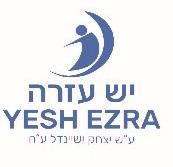
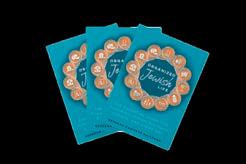
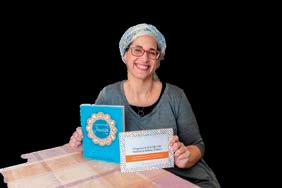


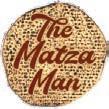

















A rare opportunity to purchase a luxury double Sea Facing Apartment in Netanya ( 250 sq metres)




6 rooms facing west / south – Sunny and full of light
2 balconies
18th Floor
Concierge 24/7
Heated Pool open 7 months of the year
Fully Equipped Gym
2 underground parking spaces
2 spacious storage rooms

2 minutes walk from Young Israel Synagogue
2 minutes walk from the beach
On prestigious Nitza Bouldevard, North Netanya. 10 minutes walk from the centre of Netanya




7,700,000 ILS
Contact : Alexandra Stuart 053 822 3513